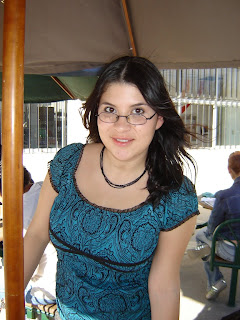
This is one of my favorites japanese magazines, i only have 2 of them but there´s enough to see how interesting are the Cancam..
The Japanese magazine market has seen relative decline over the last few years after peaking in 1996. Some blame the increasingly large amount of free information available on the Internet, but the sales drop began well before online media made a significant penetration into the Japanese market. Since most youth-oriented magazines in Japan are mostly “consumer guides” - with loads of product information and very little in the way of critical review - it logically follows that the decrease of consumer budgets in the recessionary environment would cause less need for consumption guidance of the latest and most fabulous items. Whether this is the main reason for decline or not, women’s fashion magazines are generally holding their position against the market turbulence compared to other categories of titles.
One particular magazine – Can Cam – has seen unmatched growth in the last few years, and broadly speaking, dominates the women’s fashion world. The name derives from an abbreviation of “I Can Campus,” reflecting the magazine’s roots as a publication for college and junior college students. Now the median reader age is 23.02 (2005 data), and more than half of the readers are employed. The publisher reports sales of 715,417 (2006 data), but even Audit Bureau of Circulation (ABC)’s more conservative estimate of 594,499 for late 2005 is an astounding sales figure. (For reference, magazines with much wider general audiences and longer histories such as Shukan Bunshun and Shukan Post only hit 575,343 and 436,775 copies in the ABC data from late 2005, respectively.)
Like other magazines, Can Cam peaked in the late 1990s and saw a steady drop in readership. From the nadir of 320,135 in early 2001, sales increased and grew to the current number – entailing an 85% increase in four years. Most attribute the growth to the magazine’s innovative use of “senzoku moderu” (専属モデル) – a half-dozen young female models who appear exclusively within Can Cam. Each month’s fashion features employ these girls wearing the latest styles and products, and they rarely materialize in rival publications. Readers make strong associations with themselves and these female models, and pick up a copy of Can Cam with the guarantee that their favorite will appear in at least 20 to 30 pages of the magazine every month. Rival publications such as Ray, and JJ offer similar content, but the exclusive celebrity models have given Can Cam an edge over the competition. (Titles JJ and ViVi targeted at a similar audience have seen sales fall in the last two years. ) Can Cam’s sales cannot be solely attributed to readership movement within the same fashion look, however. Female fashion magazines in totally different “lifestyle genres” such as non•no and Classy have also seen a decline.
Lately, the most prominent three of these models – Yamada Yu, Ebihara Yuri (aka Ebi-chan), and Oshikiri Moe – have branched out into other media like TV with the backing of their strong-armed production agencies to become stars in their own right. Ebihara in particular has been the "it girl" of the last two years and found herself as a top spokesmodel for many consumer goods. (Check the video reel to see commercials for both Can Cam and the senzoku model’s TV commercials for other products.)
Young Japanese consumers have always made their fashion choices through strict adherence to “manual magazines,” and the aggregation of females into the Can Cam readership has created a certain level of visual homogeny in the streets. Issues frequently hit 600 pages – almost all of the content dedicated to detailed information on mixing and matching specific apparel items. Although the mass of information presents a large number of possible arrangement options, individual permutations upon the ingredients would all lead to similar results: a style fun and young, safe for work and play. The general strategy is inexpensive clothes augmented with luxury brand accessories, such as bags and jewelry. Hairstyle and make-up advice run somewhere between a catalog (which prices and brand names off to the side) and detailed instructions for scientific experiments.)
Found this link in Clast
